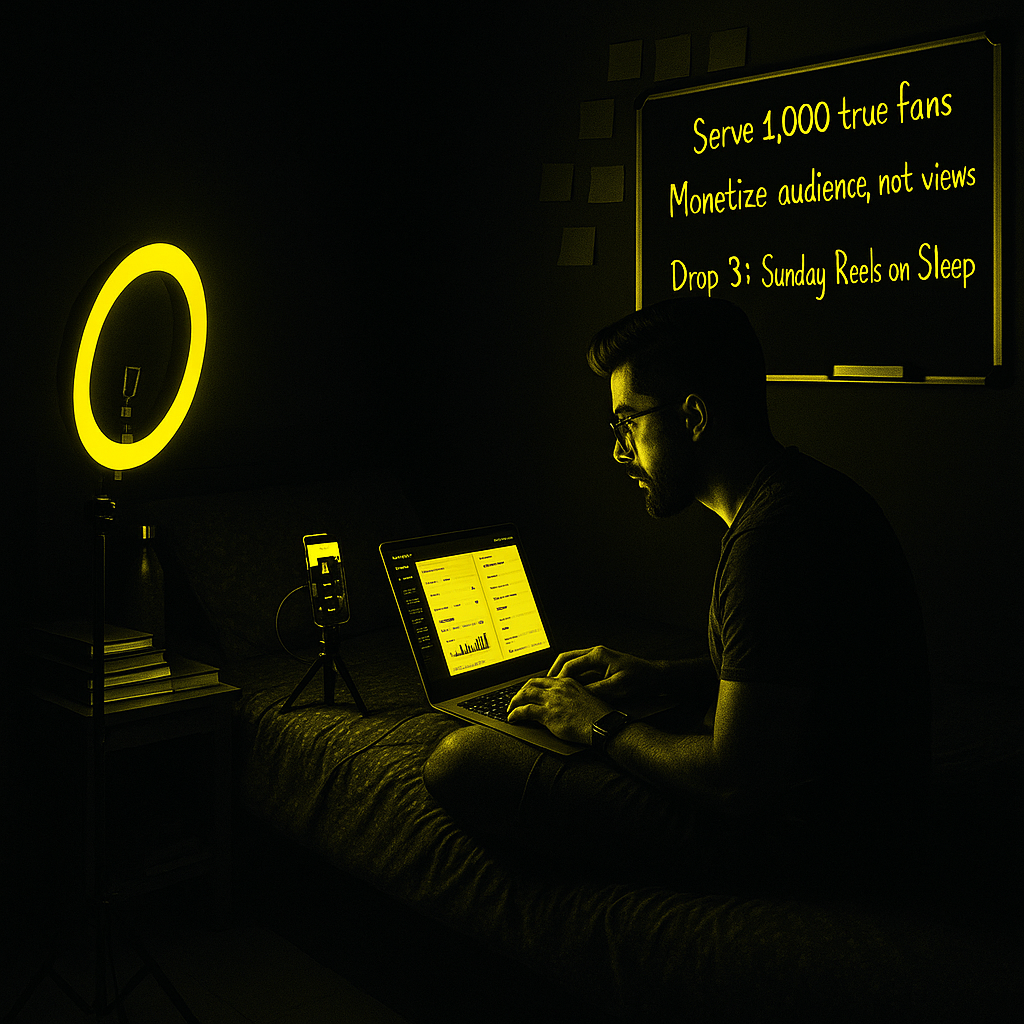The Shifting Creator Economy
I believe the future of content creation is all about small, niche communities. Naval
Ravikant tweeted about this concept a while ago, and it's becoming increasingly evident
in today's digital landscape.
For years, many people I spoke with expressed skepticism about sustainable income in
content creation: "The problem with content creation is that most of the money is with
the top creators." This observation holds true across all creator-based
platforms—YouTube, Instagram, OnlyFans, and beyond.
The conventional wisdom suggested you couldn't be a small to medium-sized creator and
think about creating content sustainably. But why has this been the case, and more
importantly, is this paradigm finally changing?
.
Understanding Traditional Monetization Models
Let's take YouTube's example to understand the traditional model. YouTube is
fundamentally a video hosting platform that pays for its servers by running ads on
videos created by YOU. To incentivize content creation, YouTube shares ad revenue from
your videos. The more people view your content (and the ads), the more money you make.
It's a simple incentive structure.
Brand deals historically operated on the same principle. More views meant more eyeballs
on the integrated advertisement, resulting in higher creator payouts. Brands calculated
payments based on "CPV" (Cost Per View).
The critical insight here is that this model monetizes "views" rather than the
"audience." And that distinction is driving an exciting new narrative in the creator
economy.
The New Paradigm: Monetizing Audience Over Views
In recent years, we've seen the emergence of creator-focused companies dedicated to
helping creators monetize their "audience" rather than just accumulating views.
Platforms like Patreon, Kajabi, Teachable, and Gumroad (all billion-dollar companies)
enable creators to generate revenue directly from their most engaged followers.
Simultaneously, we're witnessing a democratization of content creation. Short-form
content formats (Shorts/Reels/TikToks) have dramatically reduced barriers to entry. You
no longer NEED an elaborate setup to create content—though it certainly helps. You just
need compelling content. And thanks to increasingly sophisticated recommendation
algorithms, more people are discovering content that's personally relevant to them.
The Data Supports This Shift
YouTube's own research underscores this trend:
65% of Gen Z agree that content personally relevant to them is more important than
widely popular content
78% use YouTube because it serves them content that's personally relevant
55% of Gen Z watch content that no one they know personally is interested in
What This Means for Creators
Views as the primary metric for monetization potential is losing its dominance. What
matters now is cultivating a high-intent community that can genuinely help brands drive
sales. This doesn't mean top creators will lose their position—brands will continue
using them for broad awareness and brand building. However, smaller to medium-sized
creators with highly engaged niche communities will become increasingly valuable for
driving conversions and sales.
What excites me most is how consumer behavior has evolved. It's now widely acceptable to
purchase products either recommended by influencers or sold directly by them. And for
creators without experience in direct selling, we'll see more companies emerge to bridge
this gap—building platforms, products, or supply chains to facilitate creator commerce.
The Creator Economy's Bright Future
As barriers to entry continue falling to all-time lows, more companies emerge to support
creator monetization, and hyper-personalized algorithms connect creators with precisely
the right audiences, making money with a high-intent community will become 10× easier.
The future belongs to creators who understand their unique value proposition and build
genuine connections with their audience—regardless of size. You don't need to be in the
top 1% anymore; you just need to matter deeply to your specific community.
The question isn't whether you can reach millions, but whether you can truly serve the
thousands (or even hundreds) who find your content personally meaningful. That's the
future of sustainable content creation.
The Future of Content Creation: Why Niche Communities Will Win
